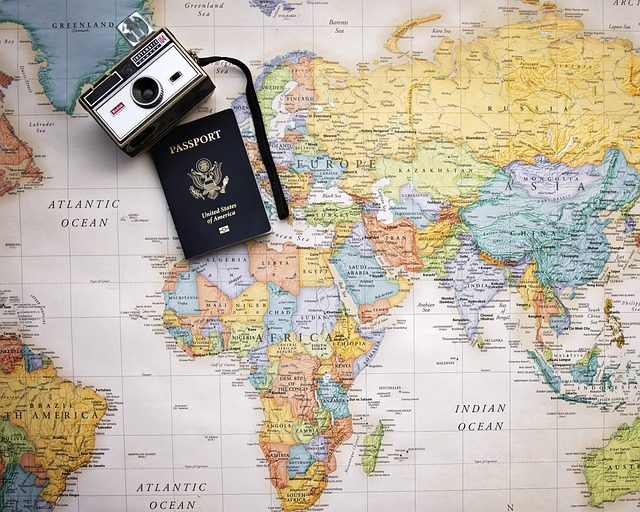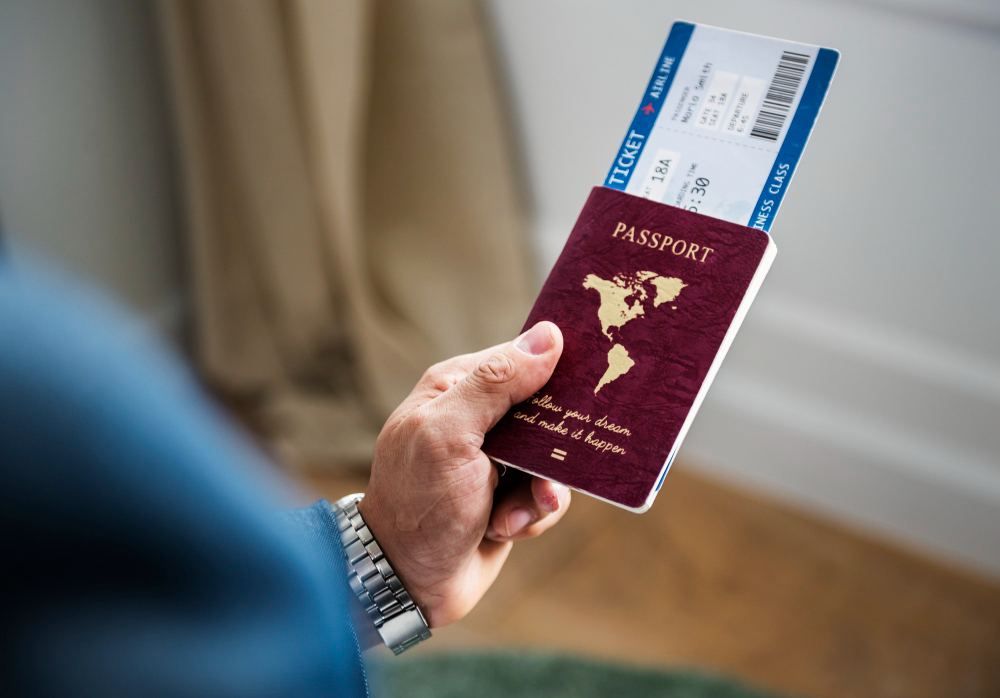The experience of an Alaskan cruise is truly unique, as it offers the perfect blend of awe-inspiring natural beauty and exhilarating outdoor adventures. It’s an opportunity that one simply cannot afford to miss. From glacial views to wildlife spotting, a cruise to Alaska promises an unforgettable journey. However, one question that often complicates the planning process is: Do You Need a Passport for Alaska Cruise?
Before you embark on your Alaskan adventure, it’s essential to consider packing tips tailored to this unique destination. The answer might not be as straightforward as you think, and the requirement can vary based on several factors such as your cruise itinerary and departure port. This article aims to dispel common misconceptions and provide you with the essential information you need to ensure that your Alaskan adventure is both enjoyable and compliant with identification requirements.
The Basics: Do You Need a Passport for an Alaska Cruise?
Confused about passport requirements for your upcoming Alaskan cruise? The essential initial move is to distinguish between open-loop cruises and closed-loop. Read on to demystify these critical terms and proceed for detailed information.
The Closed Loop vs. Open Loop Cruises
If you’re considering an Alaska cruise, it’s essential to grasp the distinction between a closed loop and an open loop cruise. This knowledge will help you navigate passport requirements smoothly. In a closed loop cruise, your journey starts and ends at the same U.S. port, like Seattle or San Francisco. This setup significantly eases the passport requirements, especially for U.S. citizens. Conversely, an open loop cruise starts and ends at different ports or includes a foreign port, complicating the identification requirements.
U.S. Citizen Requirements
For U.S. citizens taking an Alaska cruise that starts and concludes at the same U.S. port—a situation referred to as a closed-loop cruise—a passport may not be strictly required. However, it’s highly recommended that you carry one. Along with a government-issued photo ID like a driver’s license, you should present either a naturalization certificate or an original certified birth certificate from your state or province of birth if you don’t have a valid passport.
A U.S. passport card is also an acceptable alternative. It’s important to note that even if your cruise doesn’t involve air travel, a sudden need to leave the cruise in a foreign port would require a passport for re-entry into the U.S.
Non-U.S. Citizen Requirements
For non-U.S. citizens or U.S. resident aliens, the rules are quite straightforward: a valid passport is mandatory for all Alaska cruise itineraries. Additionally, you may also need a multiple re-entry visa (B-2 Visitor’s Visa) and potentially other permits and visas, particularly if your cruise includes stops in Canada or other foreign countries. Since visa requirements differ based on nationality, it’s essential to reach out to your respective embassy or consulate to determine the exact visa conditions for your trip.
Types of Identification Accepted for an Alaska Cruise
Navigating the identification requirements for an Alaskan cruise can be complex, as the type of ID you’ll need varies based on two primary factors: the cruise’s route and your own citizenship. For closed-loop cruises, which start and end at U.S. ports like Seattle or San Francisco, the ID requirements are relatively straightforward. Generally, a combination of a valid driver’s license and an original birth certificate will suffice.
For additional forms of accepted identification, you have options. An original or state-certified copy of a U.S. or Canadian birth certificate can be used. If you have a passport, whether it’s currently valid or has recently expired, that works too. Naturalization and citizenship certificates are also accepted, as are reports of birth abroad. These multiple ID options offer flexibility for travelers embarking on an Alaskan adventure. Even if your cruise briefly docks in Canadian territory, you’re generally in the clear without a passport.
However, if you opt for an open-loop cruise—one that starts and ends at different ports—then a passport is non-negotiable. This rule is particularly stringent for itineraries ending in foreign territories like Canada. Be vigilant about the expiry date; your passport should remain valid for a minimum of six months past the date your cruise concludes.
Beyond the basic guidelines, each cruise line might have specific prerequisites, especially for non-U.S. citizens. Therefore, always double-check with your cruise operator to avoid any unpleasant surprises. Remember, the failure to provide proper identification can lead to denied boarding with no refund. Choose your documents wisely to ensure a smooth sail through Alaska’s breathtaking vistas.
Advantages of Carrying a Passport
A passport is more than just a travel document; it’s your ticket to a hassle-free experience. We’ll explore the manifold advantages of carrying a passport, from seamless border crossings to unexpected travel pivots. Discover why a valid passport can be your ultimate travel companion.
Unplanned Stops
Life is unpredictable, and so is travel. Imagine your cruise making an unplanned stop at a foreign port due to weather conditions or technical issues. With a passport in hand, you gain the flexibility to disembark without complications.
Medical Emergencies
In cases of medical emergencies requiring urgent care that the ship’s medical facility can’t provide, a passport will expedite your entry into a foreign country for treatment. It’s better to be safe than sorry.
Re-Entry into the U.S.
While alternative IDs might get you on board for a closed-loop cruise, a passport ensures the smoothest re-entry into the United States. It serves as a universal proof of identity and citizenship, sparing you unnecessary questioning or delays at customs.
Risks of Not Carrying a Passport on an Alaska Cruise
Embarking on an Alaska cruise without a passport is something that should not be taken lightly. It’s crucial to understand the potential risks involved and why it’s important to have a passport with you. This guide sheds light on the overlooked risks and encourages you to reconsider setting sail without one.
What Could Go Wrong?
The lack of a passport could restrict your movement and lead to missed opportunities. Whether it’s an impromptu excursion or a need to fly back to the U.S. mid-cruise, not having a passport can complicate matters substantially.
Scenarios and Consequences
Picture this: your cruise ends in a Canadian port, but you only possess a U.S. driver’s license and a birth certificate. In this case, you’re likely stuck until you find an alternative way to prove your eligibility for entry into the U.S., which could be both time-consuming and costly.
Getting Back to the U.S.
Re-entering the U.S. without a passport may involve lengthy interrogations and verification procedures. Even worse, you could face legal repercussions. When you weigh the risks against the simple act of carrying a passport, the choice becomes clear.
How to Prepare Your Passport for an Alaska Cruise
Some countries have strict passport validity rules that could affect your travel. For instance, if a port of call requires a passport to be valid for three months beyond your departure from that country, failing to meet this could lead to issues, including denied entry. Always check the specific validity requirements for each destination on your itinerary.
Passport Validity
Prior to embarking on your journey, it’s essential to verify the validity of your passport. As a rule of thumb, your passport should have at least six months of validity beyond your intended return date. This not only satisfies U.S. guidelines but also complies with the regulations of other nations you may encounter or transit through.
Being proactive can save the day. Consider carrying photocopies of your passport’s identification page or digitally storing it in a secure app.
Lost or Stolen Passports
It’s every traveler’s nightmare—losing your passport or having it stolen. But don’t panic. If this happens, immediately report it to the ship’s security and the nearest U.S. consulate or embassy. They’ll walk you through the process of securing a provisional passport for your journey back.
Child Passport Requirements
No matter their age, children must possess individual passports for international voyages. Typically, for children below the age of 16, both parents are usually required to show up in person to submit the child’s passport application. Also, these passports are valid for only five years, unlike adult passports that last for ten. This is an important consideration if you’re planning a cruise for kids, as their passports will need to be renewed more frequently.
For children ages 16-17, at least one parent or guardian should accompany them when applying for a passport. Remember that certain cruise lines and countries may have additional documentation requirements for minors traveling without both parents. Always check these stipulations to avoid last-minute hassles.
For Individuals Without a Valid Passport
If you’re planning an Alaskan cruise but don’t currently have a valid passport, it’s essential to start the application process as soon as possible. Generally, the process involves completing an application form, gathering required documents like proof of citizenship and identity, and taking a passport photo. After submitting your application, you’ll also need to pay an application fee. The processing times can vary, so check the U.S. Department of State website for the most up-to-date information. Alternatively, expedited services are available for an additional fee if you’re in a rush.
For Individuals With Expired Passports
If your passport has recently expired, renewing it is generally simpler than applying for a new one. You’ll need to complete a renewal application form, take a new passport photo, and pay the renewal fee. You can usually send these materials by mail unless your old passport is damaged or you were younger than 16 when it was issued. In those cases, you’ll need to apply in person. Keep in mind that renewal processing times also vary, so it’s wise to renew your passport well in advance of your cruise departure date.
Cruises That Strictly Require a Passport
One-way or “open-jaw” cruises are journeys that start and end at different ports. In most cases, these cruises will require a passport for all passengers, irrespective of nationality. The requirement holds true, especially if the cruise begins or ends in a foreign country. For example, a cruise that starts in Anchorage, Alaska, and ends in Vancouver, Canada, would necessitate a passport. Such itineraries are often cheaper but come with the caveat of more complicated—and potentially expensive—air travel arrangements.
Even if a cruise starts and ends in the U.S., you’ll likely need a passport if the itinerary includes foreign ports of call outside North America. So, if your Alaska cruise has stops in Japan, Russia, or any other international destination, a passport is mandatory.
Not all stops in Canada necessitate a passport; however, some specific ports may have stricter entry requirements. Therefore, it’s advisable to keep a valid passport handy to avoid any travel disruptions.
Having a passport provides you with greater flexibility and peace of mind. From unexpected detours to enticing shore excursions, carrying a passport allows you to take full advantage of all your cruise has to offer without the stress of entry or re-entry issues.
Is Cruising to Alaska Worthwhile?
The value of an Alaskan cruise can be measured in breathtaking landscapes, unique wildlife encounters, and enriching cultural experiences. From majestic glaciers to abundant sea and land fauna, the natural splendors alone make these cruises an unforgettable adventure. Pair that with high-quality onboard amenities, and many find the experience absolutely worthwhile.
What Is the Average Cost of an Alaskan Cruise?
The cost of an Alaskan cruise can vary widely, depending on factors like the cruise line, cabin type, and length of the voyage. Typically, one can anticipate spending anywhere from $500 to $5,000 per individual. Add-ons like shore excursions can also add to the cost but often provide invaluable experiences.
What Happens if My Alaska Cruise Doesn’t Include a Canadian Port of Call?
If your cruise is limited to U.S. waters, it may not be necessary to have a passport. However, lacking one may restrict your activities or cause complications if emergency re-entry into the U.S. is required. Nonetheless, you can still enjoy Alaska’s beauty and attractions without crossing into Canadian waters.
Conclusion
When it comes to voyaging through Alaska’s pristine waters, the necessity for a passport varies depending on your cruise type—closed-loop or open-loop—and your citizenship status. While U.S. citizens on closed-loop cruises may not be strictly required to have a passport, it’s highly recommended for unanticipated scenarios like medical emergencies or unplanned stops. On the other hand, if you’re embarking on an open-loop cruise or are a non-U.S. citizen, a valid passport is mandatory.
To ensure a worry-free travel experience, double-check your cruise’s specific requirements for identification and make sure your passport is valid for at least six months after your planned travel date.
FAQs
Can you go to Alaska without a passport?
Yes, you can travel to Alaska without a passport if you are a U.S. citizen and your trip doesn’t include stops in foreign countries. However, it’s advisable to carry one for emergency situations or unplanned international stops.
Do you need a passport to go to Alaska from PA?
If you’re traveling from Pennsylvania (PA) to Alaska and you’re a U.S. citizen, you do not need a passport for domestic flights. However, a passport is strongly recommended if your travel itinerary includes any international stops.
Do you need a passport to go on an Alaskan cruise on Royal Caribbean?
For closed-loop cruises that start and end in the same U.S. port, a passport is not strictly required; a state-issued ID and a birth certificate will suffice. If you are embarking or disembarking from a foreign port on a cruise, it is mandatory to have a passport.
Do you need a passport for an Alaskan cruise on Carnival?
Similar to Royal Caribbean, Carnival’s requirements differ based on the cruise type. When it comes to closed-loop cruises, a government-issued ID along with a birth certificate are deemed sufficient. For open-loop cruises that either start or end in a foreign port, a valid passport is required.
Can you still go on a cruise without a passport?
Indeed, a closed-loop cruise that begins and concludes at the same U.S. port doesn’t necessarily require a passport. Nonetheless, alternative forms of identification, such as a state-issued ID and an official birth certificate, are needed. Despite this, having a passport is highly recommended for unexpected scenarios.








